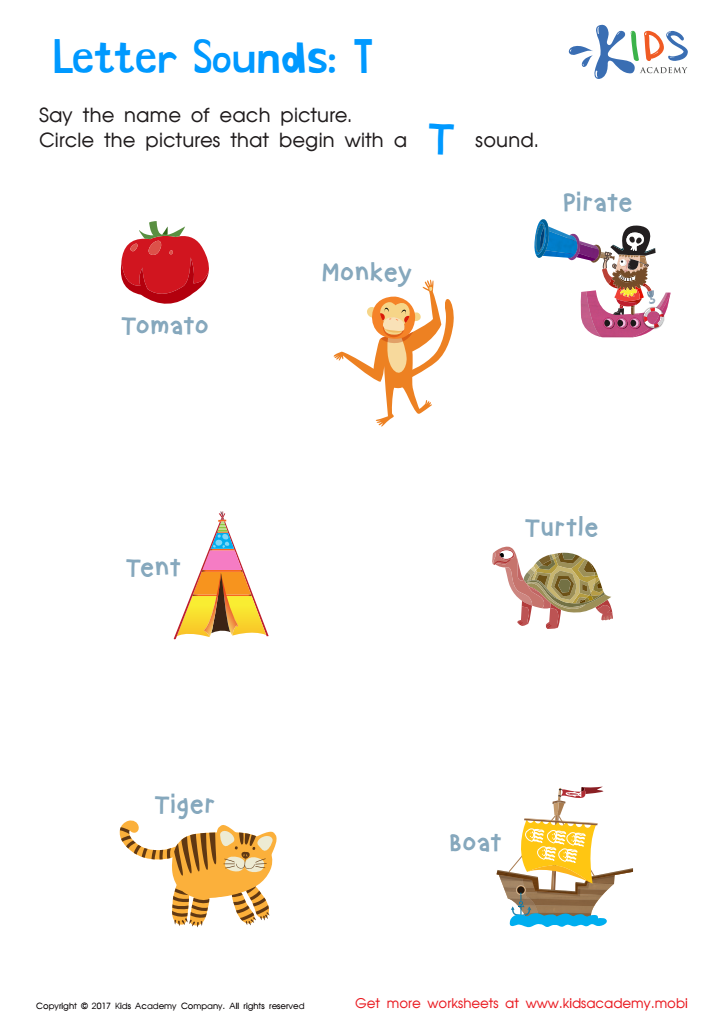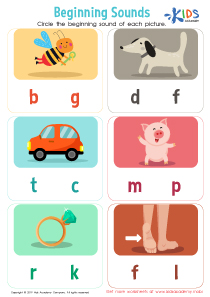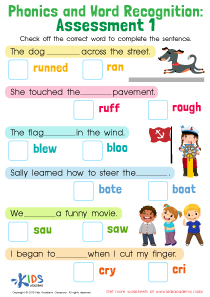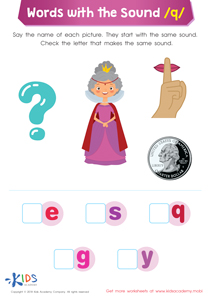Letter-sound correlation Easy Letter Sounds Worksheets for 4-Year-Olds
3 filtered results
-
From - To
Introduce your 4-year-old to the essential skill of letter-sound correlation with our Easy Letter Sounds Worksheets designed to make learning engaging and fun. Each worksheet offers interactive activities that help children recognize letter sounds and match them to corresponding letters, paving the foundation for strong reading abilities. Purposely crafted for beginners, our worksheets feature colorful visuals and enjoyable exercises that stimulate young minds and foster a love for literacy. Download Kids Academy’s worksheets today to provide your child with a head start in phonetics through the adventurous world of letters and sounds!


Letter A Sounds Worksheet


Letter U Sounds Worksheet


Letter T Sounds Worksheet
Parents and teachers should prioritize letter-sound correlation because it is a pivotal step in early literacy development. For 4-year-olds, understanding the relationship between letters and their associated sounds lays the groundwork for reading and writing skills. This connection, known as phonemic awareness, enhances a child's ability to decode words, which is essential for fluent reading. Decoding words means they can recognize and sound out words they’ve never seen before, fostering confidence and independence in reading.
Introducing these skills early increases vocabulary and comprehension. It also aids in spelling by allowing children to spell unfamiliar words phonemically. Developing these skills at a young age establishes a solid foundation that supports future academic success across all subjects. Moreover, mastering letter-sound correlations can create a positive, enjoyable learning experience, fostering a love for reading that can last a lifetime.
Early literacy skills have long-term academic impacts, and by prioritizing letter-sound correlations in young learners, parents and teachers help build the resilience and skills necessary for tackling more complex literacy tasks in the future. Igniting this enthusiasm for letters and sounds in 4-year-olds sets them on a course of curiosity and lifelong learning.

 Assign to My Students
Assign to My Students


















